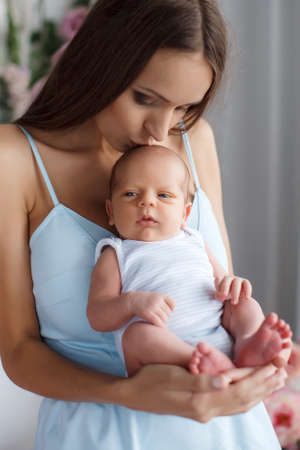Introduction: Understanding the Pacifier-Breastfeeding Relationship
For many new parents in the United States, deciding whether to use a pacifier can be surprisingly stressful. If you are breastfeeding, you may hear mixed messages from family, friends, and even healthcare providers. Some people say pacifiers cause “nipple confusion” or interfere with successful breastfeeding. Others claim pacifiers soothe babies and help parents get more sleep. With so much conflicting advice, it’s normal to feel confused or worried about making the right choice for your baby.
Let’s start by acknowledging these common concerns:
| Common Concerns | What Parents Often Feel |
|---|---|
| Will a pacifier make my baby stop breastfeeding? | Worried, anxious, unsure what to believe |
| Could using a pacifier lead to nipple confusion? | Confused by different opinions from experts and loved ones |
| If I give my baby a pacifier, am I doing something wrong? | Guilty or judged by others |
| Can a pacifier actually help with soothing or sleep? | Hopeful but uncertain if it’s safe or helpful |
These emotions are completely normal. In American parenting culture, there is often pressure to “do things right,” especially when it comes to feeding choices and newborn care. Social media, parenting blogs, and online forums add to the noise, sometimes making it harder to sort fact from myth.
This article aims to clear up the confusion. We’ll break down the latest research, explain why myths persist, and share practical tips so you can make the best decision for your family—without guilt or second-guessing.
2. Debunking Common Myths About Pacifiers and Breastfeeding
Understanding the Concerns: What Are Parents Hearing?
When it comes to pacifiers and breastfeeding, there are a lot of mixed messages out there. Many new parents worry that introducing a pacifier could cause problems for their baby’s breastfeeding journey. Let’s break down some of the most common myths and see what current research really says.
Myth #1: Pacifiers Cause Nipple Confusion
This is one of the top concerns for breastfeeding moms in the U.S. The idea is that babies might get confused between the breast and the pacifier, which could lead to difficulty latching or less effective nursing. However, recent studies show that for most full-term, healthy babies, using a pacifier does not cause long-term nipple confusion if breastfeeding is well established (usually after 3-4 weeks).
| Concern | What Research Says |
|---|---|
| Nipple Confusion | Not a significant issue if breastfeeding is established before introducing a pacifier |
| Latch Problems | No clear evidence that occasional pacifier use causes latch issues in healthy infants |
Myth #2: Pacifiers Lead to Early Weaning
Some parents worry that using a pacifier might make their baby lose interest in breastfeeding altogether. While this concern makes sense, especially if a baby seems to love their binky, research from organizations like the American Academy of Pediatrics (AAP) suggests otherwise. In fact, several large studies have shown that appropriate pacifier use does not increase the risk of early weaning when breastfeeding is going well.
Key Points on Pacifiers and Weaning:
- Pediatric experts recommend waiting until breastfeeding is going smoothly before introducing a pacifier—usually around 3-4 weeks old.
- Using a pacifier to soothe your baby between feedings doesn’t mean they’ll stop wanting to nurse.
- If your baby seems less interested in feeding, talk with your pediatrician or lactation consultant rather than assuming the pacifier is to blame.
Myth #3: Pacifiers Interfere with Milk Supply
Another worry is that giving your baby a pacifier might reduce how often they nurse, which could lower your milk supply. The good news? As long as you’re feeding on demand and watching your baby’s hunger cues, occasional pacifier use isn’t likely to impact your milk supply. Babies who are hungry will still want to nurse!
| Myth | The Facts |
|---|---|
| Pacifiers lower milk supply | No evidence if nursing happens frequently and on demand; always watch baby’s cues |
| Pacifiers replace feedings | Not true as long as you respond when your baby wants to eat |
The Bottom Line: Evidence Over Assumptions
The key takeaway for American parents is that many concerns about pacifiers and breastfeeding come from older advice or misunderstandings. Modern research supports that with proper timing and attention to your babys needs, pacifiers can be part of a healthy feeding relationship. If you ever have questions or worries, dont hesitate to reach out to your healthcare provider or a certified lactation consultant—they’re there to support you every step of the way!

3. Benefits of Pacifier Use for Infants and Parents
Many American families wonder about the real-life benefits of using pacifiers, especially when breastfeeding. While there are myths and concerns, research shows that pacifiers can offer several advantages for both babies and parents. Let’s look at some of the most important evidence-based benefits:
Soothing and Comforting Infants
Pacifiers can be a wonderful tool to help calm fussy babies. Sucking is a natural reflex for infants, even when they’re not hungry. Pacifiers satisfy this need, which can reduce crying and help babies feel secure. This soothing effect is particularly helpful during stressful moments, car rides, or doctor visits.
Supporting Better Sleep
Many parents notice that their babies fall asleep more easily with a pacifier. The gentle sucking action can help infants settle down at bedtime or nap time. Pacifiers may also make it easier for babies to self-soothe if they wake up during the night, which can lead to longer stretches of sleep for both baby and parents.
Lowering the Risk of SIDS
One of the most significant health benefits linked to pacifier use is a reduced risk of sudden infant death syndrome (SIDS). According to the American Academy of Pediatrics (AAP), offering a pacifier at nap time and bedtime has been associated with a lower chance of SIDS. Experts are still studying why this happens, but it may relate to keeping airways open or supporting lighter sleep patterns.
Key Benefits of Pacifiers: An Easy Overview
| Benefit | Description | Evidence/Recommendation |
|---|---|---|
| Soothing Effect | Helps calm fussy or upset infants by satisfying their natural sucking reflex. | Supported by pediatric research and parent experience. |
| Better Sleep | Aids in helping babies fall asleep and stay asleep longer. | Commonly reported by American families; recommended as part of safe sleep routines. |
| SIDS Prevention | Lowers the risk of sudden infant death syndrome when used at sleep times. | AAP recommends offering pacifiers at naps and bedtime after breastfeeding is established. |
| Easier Transitions | Makes situations like traveling or vaccinations less stressful for babies. | Pediatricians often suggest pacifiers for comfort during stressful events. |
| Parent Relief | Gives caregivers another tool to soothe their baby, which can reduce stress for everyone. | Widely valued in American parenting culture as a helpful resource. |
The Perspective of American Families
For many parents in the United States, pacifiers are seen as an essential part of their baby care toolkit. They’re easy to find in stores, simple to clean, and come in lots of styles to suit different preferences. Whether you’re traveling across town or settling your little one down at home, having a pacifier on hand can make daily life smoother for both you and your baby.
4. Potential Drawbacks and Risks of Pacifier Use
Understanding the Challenges
While pacifiers can be helpful for soothing babies, its important to be aware of some potential drawbacks, especially when it comes to breastfeeding. Parents often have questions about how pacifiers might affect their babys health and breastfeeding journey. Here’s what you need to know.
Common Concerns Linked to Pacifier Use
| Concern | Description | Best Practices |
|---|---|---|
| Dental Issues | Long-term use, especially past age 2-4, can lead to changes in the shape of the mouth or misaligned teeth. | Limit pacifier use as your child grows older, ideally weaning off before age 2 to minimize dental problems. |
| Breastfeeding Exclusivity | Pacifiers may interfere with exclusive breastfeeding, especially if introduced early (before breastfeeding is well-established). | Wait until breastfeeding is going smoothly—usually around 3-4 weeks—before introducing a pacifier. |
| Duration of Breastfeeding | Some studies suggest that early and frequent pacifier use might shorten the length of time moms breastfeed. | Use pacifiers thoughtfully and continue offering the breast first for comfort and feeding needs. |
| Ear Infections | Pacifier use has been linked to a higher risk of ear infections in infants and toddlers. | Keep the pacifier clean, limit use during illness, and consider reducing pacifier time as your child gets older. |
Pacing Pacifier Introduction: Tips for Breastfeeding Families
- Start With Breast: Always offer the breast first when your baby is fussy or hungry. Pacifiers should not replace feedings or bonding time at the breast.
- Wait Until Breastfeeding Is Established: Most experts recommend waiting about 3-4 weeks after birth before introducing a pacifier if you are breastfeeding.
- Observe Your Baby: Every baby is different. Watch for signs that your baby is latching well and gaining weight before adding a pacifier into their routine.
- Avoid Prolonged Use: Try not to let your child use a pacifier all day long. Reserve it for naps, bedtime, or particularly fussy moments.
- Practice Good Hygiene: Regularly clean and replace pacifiers to help prevent infections.
The Bottom Line on Risks and Smart Use
Pacifiers can be a helpful tool for many families, but they do come with some risks—especially for dental health and breastfeeding success. By following best practices and staying informed, you can make choices that work best for you and your baby while minimizing potential challenges along the way.
5. When and How to Introduce a Pacifier
Finding the Right Time
For breastfeeding families, timing is everything when it comes to introducing a pacifier. Most American pediatricians and lactation consultants recommend waiting until breastfeeding is well established before offering a pacifier. This usually means your baby is latching on well, gaining weight steadily, and you feel confident about your milk supply. For many families, this happens around 3 to 4 weeks after birth.
Guidelines for Introducing a Pacifier
| Baby’s Age | Breastfeeding Status | Pacifier Introduction |
|---|---|---|
| 0-2 weeks | Learning to latch; milk supply forming | Wait—focus on nursing only |
| 3-4 weeks | Breastfeeding established; good weight gain | Consider introducing if needed for soothing |
| 1 month and beyond | Confident with feeding routine | Safe to introduce as comfort tool |
Practical Tips for American Families
- Follow your baby’s cues: If your baby seems satisfied after feeds and you’re not struggling with latch issues, you can try offering a pacifier.
- Avoid using the pacifier to delay or replace feedings: Always offer the breast first if your baby shows hunger signs.
- Choose a one-piece, BPA-free pacifier: These are safest and easiest to clean, matching the safety standards most American parents look for.
- Keep it clean: Sterilize new pacifiers and wash them regularly. Replace if damaged or worn out.
- No strings attached: Never tie a pacifier around your baby’s neck or crib—use clips designed with short ribbons that meet US safety guidelines.
Pacing Yourself: What Works for Your Family?
Some babies never take to pacifiers, while others find them instantly soothing. Try at nap times or bedtime first, and don’t stress if your little one isn’t interested. In the U.S., many parents use pacifiers as part of their bedtime routine because research suggests it may help reduce the risk of SIDS (Sudden Infant Death Syndrome).
A Quick Checklist for Introducing a Pacifier:
- Your baby is at least 3-4 weeks old and breastfeeding is going smoothly.
- You offer the pacifier when your baby is calm—not hungry or upset.
- You always prioritize feeding over soothing with a pacifier.
- You monitor for any changes in latch or feeding habits after introduction.
If you have concerns about nipple confusion or milk supply, reach out to your pediatrician or a lactation consultant for personalized guidance. Every family’s journey is unique, and what matters most is what works best for you and your baby.
6. Tips for Balancing Pacifier Use and Successful Breastfeeding
Finding a healthy balance between pacifier use and breastfeeding can feel tricky, especially for new parents in the U.S., where family routines can be busy and sleep is precious. Here are some simple, real-life strategies American families can use to support both effective breastfeeding and safe pacifier habits.
Timing Matters: When to Introduce a Pacifier
Most pediatricians recommend waiting until breastfeeding is well established before offering a pacifier—usually around 3 to 4 weeks old. This helps avoid nipple confusion and ensures your baby gets enough breast milk early on.
Quick Reference Table: Pacifier Introduction
| Baby’s Age | Breastfeeding Status | Pacifier Recommendation |
|---|---|---|
| 0–3 weeks | Still learning to latch & feed | Hold off on pacifiers unless needed for medical reasons |
| 3–4 weeks and up | Latching & feeding well, gaining weight | Okay to introduce pacifier if desired |
Watch Baby’s Cues First
If your baby seems fussy or wants to suck, always offer the breast first. Sometimes what looks like a need for comfort sucking is really hunger or thirst. If you’re sure your baby isn’t hungry, it’s fine to offer a pacifier for soothing.
Create a Safe Sleep Routine with Pacifiers
Pediatric experts in the U.S. say giving your baby a pacifier at naptime and bedtime can help reduce the risk of SIDS (sudden infant death syndrome). Just don’t force it—if your baby doesn’t want the pacifier, that’s okay. Never tie a pacifier around your babys neck or crib, as this can be dangerous.
Pointers for Safe Pacifier Use:
- Always use one-piece pacifiers (no detachable parts)
- Keep pacifiers clean and replace them regularly
- If the pacifier falls out during sleep, there’s no need to put it back in
- Avoid sweetening the pacifier with honey or other substances
Keep Breastfeeding On Track During Growth Spurts and Changes
Babies go through phases when they want to nurse more often (called cluster feeding). During these times, resist using a pacifier as a substitute for extra feedings. Letting your baby nurse frequently helps boost your milk supply and meets their needs.
Teamwork: Communicate with Caregivers and Family Members
If your baby spends time with grandparents, daycare providers, or babysitters, explain your approach to balancing breastfeeding and pacifiers. Share when it’s appropriate to give a pacifier so everyone stays consistent and supports your breastfeeding goals.
Sample Conversation Starter:
“We’re trying to make sure breastfeeding comes first, so please only offer the pacifier after she’s been fed. If she’s just eaten but seems fussy, then it’s okay.”
7. Conclusion: Making the Right Choice for Your Family
Choosing whether or not to use a pacifier while breastfeeding can feel overwhelming, especially with so much information and advice out there. The truth is, every baby and family is unique. What works for one child may not work for another, and that’s okay. Here’s how you can approach this decision with confidence:
Understanding Pacifiers and Breastfeeding
Let’s quickly review some key points about pacifiers and breastfeeding:
| Common Beliefs | What Research Says |
|---|---|
| Pacifiers always cause nipple confusion. | Nipple confusion isn’t guaranteed; timing and baby’s needs matter. |
| Using a pacifier means less bonding with your baby. | Pacifiers can soothe babies without replacing parent-baby connection. |
| Pacifiers interfere with breastfeeding success. | If breastfeeding is well-established (usually after 3-4 weeks), many babies go back and forth without problems. |
Benefits of Pacifiers
- May help soothe a fussy baby
- Can reduce the risk of sudden infant death syndrome (SIDS) during sleep times, according to the American Academy of Pediatrics (AAP)
- Might provide comfort between feedings when your baby just wants to suckle for relaxation
Tips for Making the Decision That Fits Your Family
- Wait until breastfeeding is established: Most experts recommend waiting until breastfeeding is going smoothly before introducing a pacifier—usually around 3-4 weeks old.
- Follow your baby’s cues: Every baby is different. Some may love pacifiers; others may have no interest at all.
- Use pacifiers safely: Clean them regularly, never tie them around your babys neck, and replace them if they show signs of wear.
- Talk to your pediatrician or lactation consultant: If you’re unsure or facing challenges, professionals can offer guidance tailored to your situation.
Your Parenting Journey Is Unique
No two families are the same. Trust your instincts as a parent, stay informed with reliable sources, and don’t hesitate to ask questions. With evidence-based guidance and expert recommendations, you can make choices that feel right for you and your baby—whether that includes a pacifier or not. Remember, you’re doing a great job!


